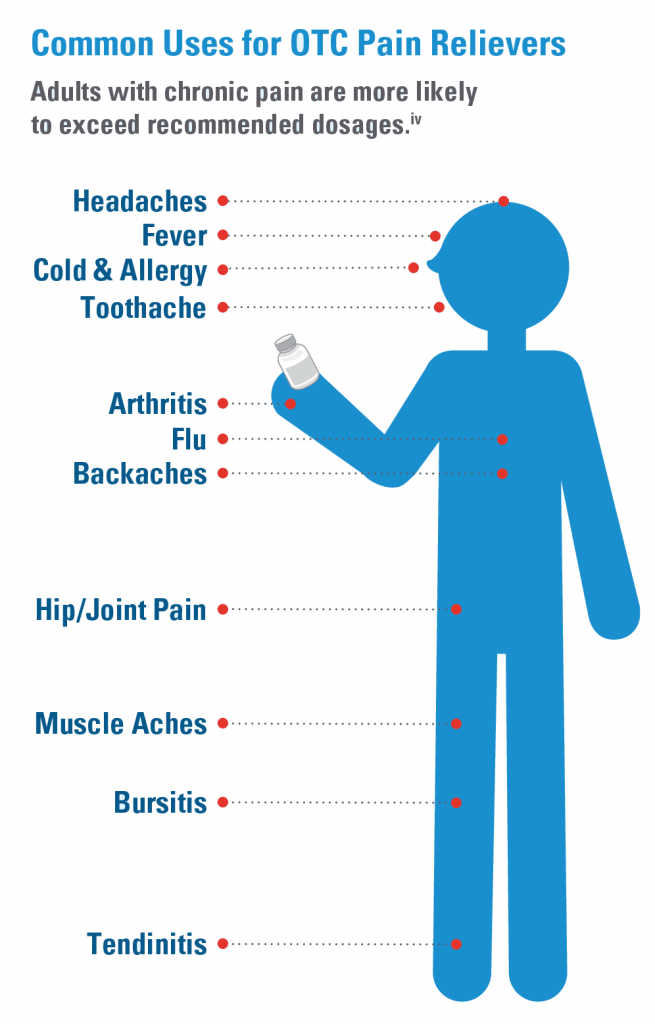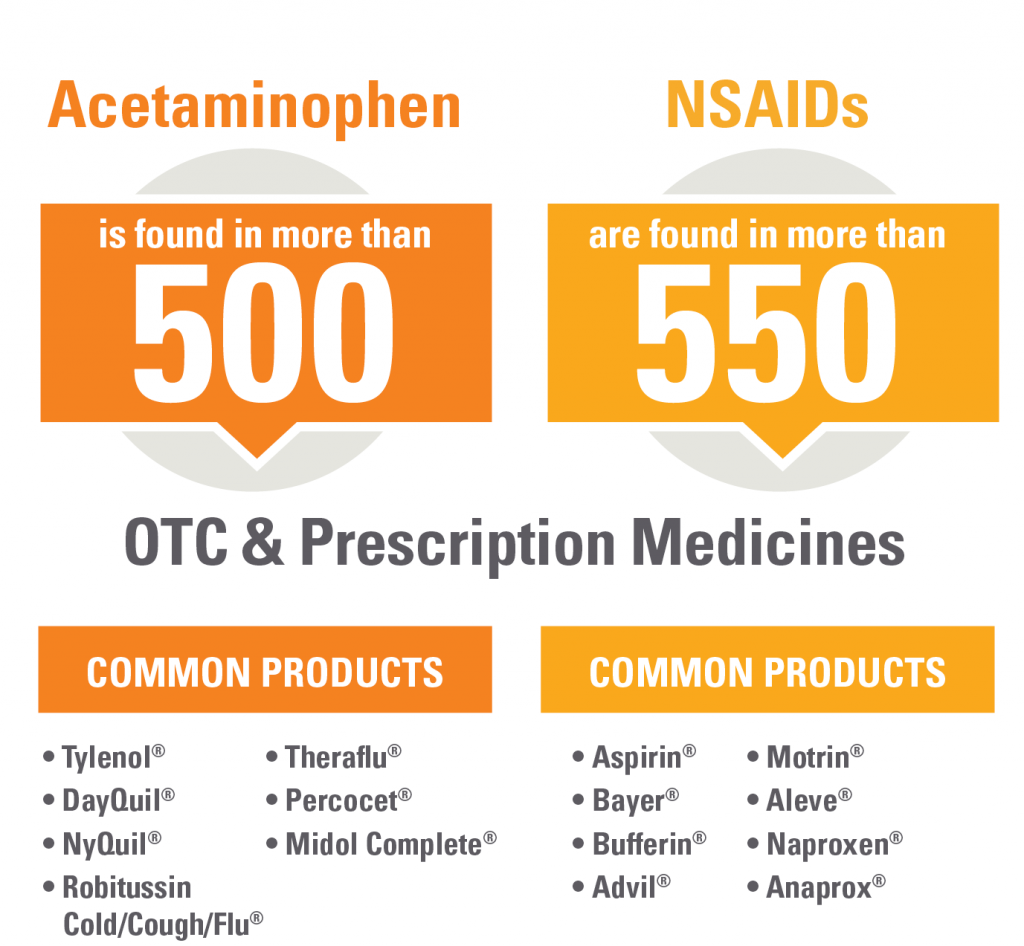![]() I have been living with migraines since I was twenty five which qualifies me as a chronic pain sufferer. They would last sometimes for two-three days leaving me to lose those days as I lay in bed with a bandana tied around my forehead and a pillow over my head to keep any light out. Back then the medications didn’t always work and they were given with a prescription pain medicine like Percocet. Over the next few years migraine medicines advanced and I was able to learn how to control them. Read on to learn Steps to OTC Medicine Safety.
I have been living with migraines since I was twenty five which qualifies me as a chronic pain sufferer. They would last sometimes for two-three days leaving me to lose those days as I lay in bed with a bandana tied around my forehead and a pillow over my head to keep any light out. Back then the medications didn’t always work and they were given with a prescription pain medicine like Percocet. Over the next few years migraine medicines advanced and I was able to learn how to control them. Read on to learn Steps to OTC Medicine Safety.

Flash forward to today. I now have a migraine medicine that literally makes the migraine go away within 15 minutes, however, with these types of medications you are only allowed to take so many in a specific time period. You need to have an alternative, which I do. As soon as I feel anything start, I grab my Advil, Aleve, or sometimes Tylenol. I sometimes take these daily. I never read and follow the labels because I figured I was a pro at what to take and when and truthfully how can this hurt me since it’s only OTC meds. It’s not like I’m taking the whole bottle at a time so I surely won’t OD.
I was asked to participate in a campaign by BOOMboxNetwork.com on behalf the American Gastroenterological
Association about OTC medicines and like any good worker, I read everything they sent and started researching.
Wasn’t I surprised when I learned that I have been taking too much OTC medicines and I could be literally be killing myself. The more I read, the more I started thinking about “other” issues I was having like stomach aches and I’m now convinced that I always had them after a few days of taking the OTC medicines. I thought that I would switch them up in case my body got used to one. It’s scary that I’ve been in the dark for over twenty years about why it’s so important to read and follow the label directions on ALL OTC medicines correctly!
Why the Gut Check Campaign is important for you:
#GutCheckAGA
- The American Gastroenterological Association developed Gut Check: Know Your Medicine to help address a huge and little-known problem: the overuse and misuse of over-the-counter pain medicines.
- While all of these medicines are safe and effective when taken in accordance with their labels, many adults unintentionally exceed a product’s dose limit and end up in the hospital with serious stomach and liver damage
- It can easily be prevented
Know What Acetaminophen/NSAIDs Are:
- Acetaminophen and NSAIDs are common ingredients that are found in literally hundreds of prescription and over-the-counter pain products.
- They are in so many medicines, it’s extremely important to read your product labels and only take one medicine at a time that contains acetaminophen, and only one at a time that contains an NSAID.
- Taking more than the recommended maximum daily dose of medicine can result in serious health problems like gastrointestinal bleeding and liver failure.

Acetaminophen
- Acetaminophen is the most common drug ingredient in America and is most often used to reduce fever and relieve minor aches and pains.
- Acetaminophen is currently in more than 500 prescription and over-the-counter products.
- It’s the active ingredient in over-the-counter products like Tylenol® and NyQuil® but acetaminophen is also in prescription products like Percocet and Vicodin.
- So if you take Tylenol® for a headache and at the same time take Theraflu® to fight off a cold, you are actually doubling up acetaminophen, despite the fact these medicines were intended for different ailments.
- The only way to recognize acetaminophen is to look at a product label and determine if it’s listed as an active ingredient.
- The maximum daily dose for acetaminophen – as stated by the FDA – is 4,000 mg/day.
- It can also be abbreviated as “APAP”, “acet” or “acetam”.
NSAIDs or non-steroidal anti-inflammatory drugs
- NSAIDs are commonly used to treat chronic conditions where pain and inflammation are present. Some common over-the-counter pain medicines that contain an NSAID are ibuprofen (Advil®, Motrin®), naproxen sodium (or Aleve®) and aspirin (or Bayer® )
- NSAIDs are found in more than 550 prescription and over-the-counter products!
- Just like acetaminophen, NSAIDs can be found in many forms and with different dosage limits – that all depends on the ingredients. For instance, the maximum daily dose for naproxen sodium is 660 mg/daily; 1,200 mg/daily for ibuprofen; and 4,000 mg/daily for aspirin.
Harm Caused from Overdose/Overuse
- Taking multiple medicines with acetaminophen or an NSAID — even for different issues like a headache or cold — can place you at risk of serious liver and stomach damage.
Steps to OTC Medicine Safety
Three simple but very important steps:
- Read and follow ALL of your medicine labels and do not exceed dosing guidelines. This includes prescription products, over-the-counter medicines and even supplements.
- Only take one products at a time that contains acetaminophen or an NSAID.
- Talk with your doctor or pharmacist about your medicine use and other options that can help you manage your pain.
These three actions can help you find pain relief without compromising your long term health.
Visit Gut Check: Know Your Medicine online
– http://gutcheck.gastro.org
Connect
- Twitter https://twitter.com/AmerGastroAssn
- Facebook: https://www.facebook.com/AmerGastroAssn
- Youtube: http://www.youtube.com/amergastroassn
Stay Safe! Stay Healthy!
**This is a sponsored post


It is truly scary that without knowing it you could be doing grave harm to yourself. This is excellent information.